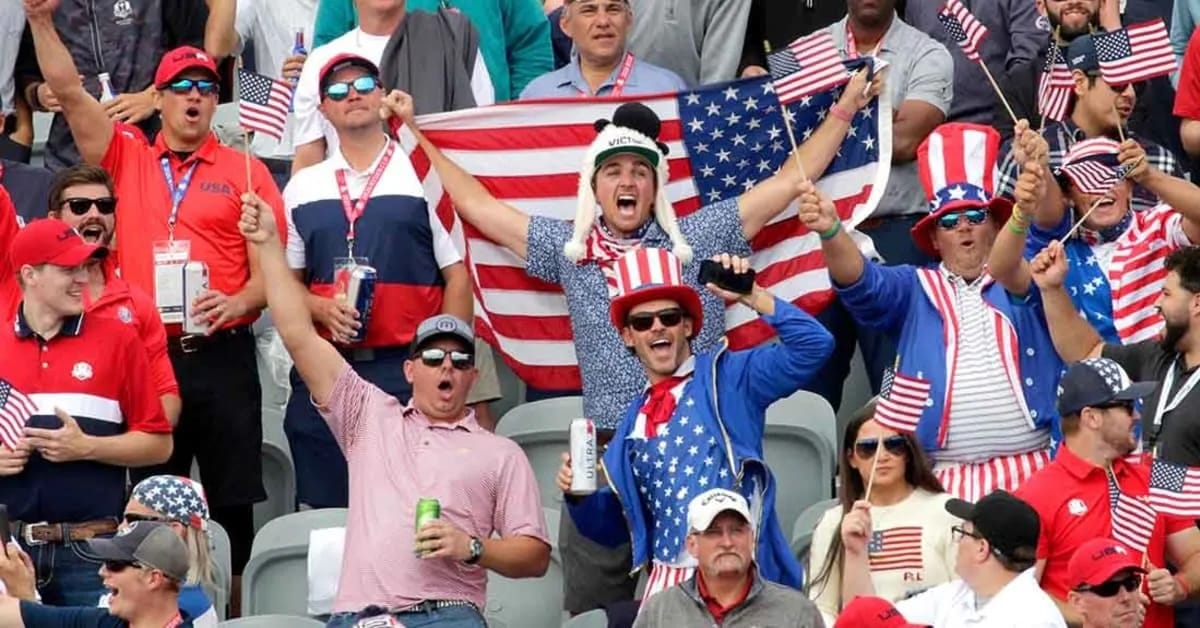I came late to the game of golf. Nobody played golf in the Sumner Field Projects in Minneapolis, where I lived part of my pre-school years. By the time I was in first grade, my family had moved to a South Minneapolis neighborhood. One of my neighbors across the street was a popular jazz musician. When I played at my friend Jimmy Bowman’s house, I sometimes saw his father’s golf clubs, but I paid them little attention.
By the time I hit high school, I was convinced I was an athlete in every sense of the word. Football, basketball, baseball — I played them all. On the track, I hurled the discus and shot put, even gave the long jump a try. If a sport involved a ball, I was sure I could handle it. At least, that’s what I told myself.
Golf was typically televised every weekend during the season, and while I generally found it boring, certain players demonstrated enough flair to keep my attention. I grew up admiring Seve Ballesteros, Tom Watson, and Lee Trevino. I didn’t watch often, but when I did, they were the players I paid attention to.
I’d made it through four years of college without ever holding a golf club other than a putter in putt-putt golf. My first professional job was in outside sales with Procter & Gamble in Jacksonville. I worked from my apartment and didn’t go to an office. My next job in sales was with Southern Bell, where I worked from an office, but I didn't spend any time contemplating golf.
When the Bell System was split up in divestiture, I ended up in Orlando with AT&T. It was a much smaller office with about eight salespeople, our support staff, and a manager. It seemed that every Monday, the other salespeople and the manager would gather around the water cooler or in the break room to discuss the golf they’d played over the weekend.
One day, the salespeople had a mandatory sales meeting on a golf course, which consisted of everyone playing a round of golf. I quickly learned two things:
- The guys who religiously bragged about their rounds every Monday were fairly bad golfers.
- The athletic ability I thought I possessed didn’t translate to the golf course.
The Sable Point golf course we played at had narrow fairways. My round consisted mainly of sending the ball from side to side into the woods, rarely getting the ball off the ground. I decided I wasn’t going out like that, took some lessons, and got good enough to have a couple of moments each round that were good enough to keep me coming back.
I never became more than decent, sometimes breaking 100, which puts me in about the 50th percentile. I developed a love for the game, and I joined a national golf club that hosted approximately five tournaments a year, including one that was usually held outside the country. I’ve played at some excellent courses, including Pebble Beach and all the Disney Courses in Orlando, where I lived, as well as Bay Hill. I’ve participated in charity fundraisers along with celebrities and executives.
Additionally, I played in one tournament to raise money for the Orlando Magic Foundation, and my foursome included Betsy DeVos, who later became the Secretary of Education. As much as I came to hate her politics years later, on the golf course, she was friendly, hospitable, and kind. I was invited to play a round with Herman Cain when he was still with Godfather’s Pizza, before he became a right-wing radio host and presidential candidate. He was as gracious a person as I’ve ever met.
Golf has been called the sport of gentlemen or the sport of kings. Women now make up a much higher percentage of golfers than when I started. There are dozens of written rules, as well as many unwritten ones. Golf etiquette is about respect — for your playing partners, for the course, and for the rhythm of the game. Following these courtesies makes you welcome in any foursome.
For most of golf’s modern history, fans were expected to behave with a kind of reverence. The sport was built on etiquette, and that extended to the gallery. A hush would fall over the crowd as a player addressed the ball. Applause was polite, never raucous. Even at the Masters, where the roars of Augusta National are legendary, the noise was about the shot, not about heckling the player.
But over the last three decades, something has shifted. Golf galleries have grown larger, louder, and more willing to cross lines once thought sacred. The transformation didn’t happen overnight. It was a gradual process, fueled by television, alcohol sales, and the rise of golf as entertainment rather than a ritual.
The “Get in the Hole!” Era
The first cracks in the old etiquette came in the 1990s and early 2000s, when Tiger Woods turned golf into a global spectacle. With Tiger came massive crowds, many of them new to the sport. They brought with them the energy of football and basketball arenas.
That’s when the infamous “Get in the hole!” shout began. It started as a quirky outburst on par‑3 tee shots, but soon it was shouted after every drive, no matter how absurd. Players rolled their eyes, commentators sighed, and traditionalists fumed. But the genie was out of the bottle. Golf fans had discovered their voices.
If Tiger brought the crowds, the Waste Management Phoenix Open at TPC Scottsdale gave them a stage. The par‑3 16th hole became golf’s only true stadium, with 20,000 fans packed into grandstands, chanting, booing, and throwing beer when a hole‑in‑one dropped.
What began as a novelty became a cultural phenomenon. Players leaned into it — some wore football jerseys, others tossed souvenirs into the stands. However, the atmosphere also emboldened fans to heckle, jeer, and cross the line. Booing a missed green was one thing; shouting personal insults was another. The Phoenix Open normalized behavior that would have been unthinkable at Augusta or St. Andrews.
By the 2010s, golf fandom was being shaped by social media. Clips of outrageous fan behavior went viral. A heckler who called his shot and sank a putt during a practice round with Rory McIlroy became a legend. Brooks Koepka’s fans adopted the “Brooksy” chant to taunt Bryson DeChambeau, sparking a feud that the PGA Tour eventually had to police.
The line between playful banter and harassment blurred. Fans weren’t just spectators anymore; they were performers, seeking their own viral moment.
Another factor was alcohol. As tournaments sought to boost revenue, beer tents multiplied. At some events, fans were visibly intoxicated by mid‑afternoon, and the heckling grew meaner. Players like Justin Thomas and Sergio García had fans ejected for abusive comments. Rory McIlroy once admitted he had to block out “drunk hecklers” almost every round in the U.S.
The PGA Tour attempted to strike a balance between fan engagement and decorum, but the trend was clear: golf galleries were no longer guaranteed to be genteel.
Nowhere is fan behavior more intense than at the Ryder Cup. The biennial clash between the U.S. and Europe has always been emotional, but in recent years it has become a cauldron of controversy. National pride, alcohol, and the match‑play format create an atmosphere closer to soccer than golf.
In 1991, the “War on the Shore” at Kiawah Island set the tone, with American fans jeering European players. In 2016 at Hazeltine, Danny Willett’s brother called U.S. fans “a baying mob of imbeciles,” and the crowd seemed determined to prove him right. By 2018 in Paris, the roles were reversed, with European fans giving as good as they got.
But nothing compared to 2025.
Bethpage Black on Long Island has always been known for its rowdy crowds. When the Ryder Cup came there in September 2025, the stage was set for chaos.
From the opening tee shots, the atmosphere was electric — and hostile. Fans targeted Rory McIlroy, Europe’s leader, with jeers about his nationality, his marriage, and even homophobic slurs. His wife, Erica, was heckled and even struck by a thrown beer cup. Comedian Heather McMahan, serving as master of ceremonies, was caught on video leading a vulgar chant of “Fuck you, Rory!” into a microphone.
McIlroy snapped. On Friday, he made a crude gesture toward the crowd. On Saturday, he cursed at hecklers and refused to play until fans quieted down during his backswing. At one point, he told a group to “shut the fuck up” before sticking an iron shot two feet from the pin — a moment that went viral.
Security was ramped up. State troopers, park police, and even dogs patrolled the ropes. Announcers pleaded for decorum. Former U.S. captain Tom Watson issued a public apology, saying he was “ashamed” of the American crowd.
Europe won the Cup 15–13, becoming the first away team to win since 2012. McIlroy, drenched in champagne, said the abuse had only fueled him: “We shut them up by our performance and how we played.”
What the 2025 Ryder Cup Revealed
The Ryder Cup at Bethpage was a turning point. It showed how far golf fan behavior had drifted from its roots. What was once a sport of whispers and applause had become a stage for drunken chants, personal insults, and even physical aggression.
McIlroy himself summed it up: “Golf should be held to a higher standard than what was seen out there this week.”
The question now is whether golf can rein in its fans without losing the energy that makes events like the Ryder Cup thrilling. Players enjoy the passion, but not the abuse. Fans want to be part of the show, but some cross the line.
The PGA Tour and Ryder Cup organizers have begun posting spectator etiquette warnings, threatening ejections for hate speech or harassment. But enforcement is tricky. In an era where fans crave viral moments, the temptation to shout something outrageous may be too strong.
Golf has always prided itself on etiquette — players calling penalties on themselves, fans respecting silence. However, the culture of sports has undergone significant changes. Golf is no longer insulated from the rowdiness of football or basketball.

The 2025 Ryder Cup was both a spectacle and a warning. It showed the best of golf — Europe’s brilliant play — and the worst of its fans. If the sport wants to preserve its identity, it must decide where to draw the line between passion and poison.
Because if golf truly is “the sport of gentlemen,” then it must hold its fans to that same standard. Otherwise, the game risks becoming not the sport of kings, but the sport of assholes.
This post originally appeared on Medium and is edited and republished with author's permission. Read more of William Spivey's work on Medium. And if you dig his words, buy the man a coffee.

